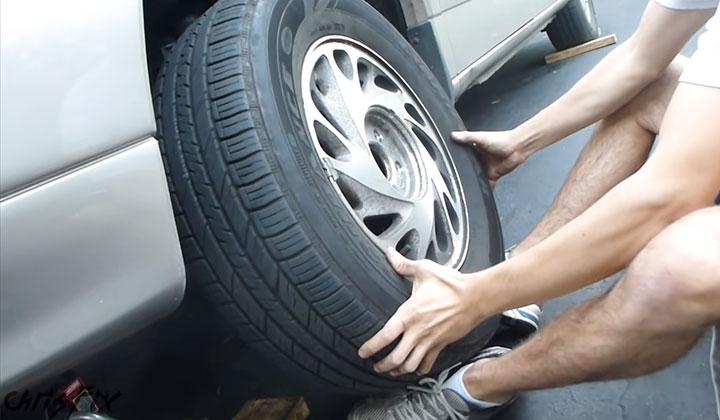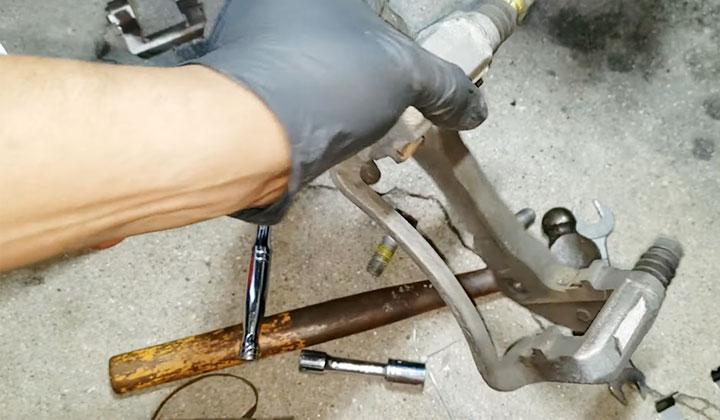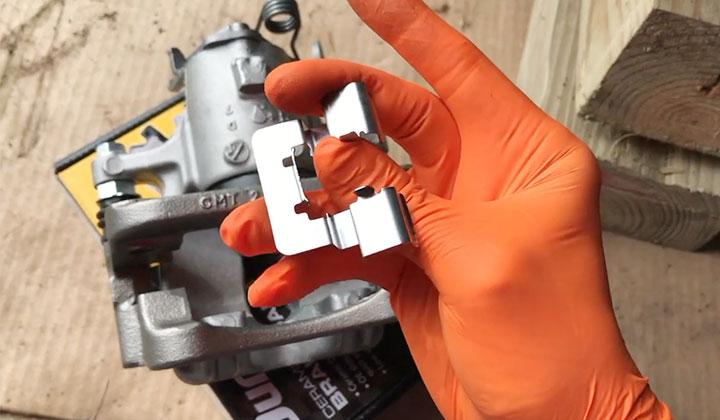If your 2013 Chevy Malibu needs new rear brake pads, you may want to know how to change them yourself. There are a few steps involved in this process, and it can be done without any special tools or expertise.
Follow the instructions provided in this article for a successful outcome every time. Keep in mind that if you don’t follow these steps carefully, your car could end up with serious damage as a result of doing it incorrectly.
So, please take care while performing these repairs on your own vehicle.
Contents
Rear Brake Pads on 2013 Chevy Malibu
If you’re experiencing a lot of brake pad wear and need replacements, now is the time to do it. You can find rear brake pads for 2013 Chevy Malibu models at your local car dealership or online retailers.
Make sure to have your vehicle’s VIN number handy so that the correct pads can be ordered for installation on your car.
The best way to install new brakes is by using OEM (original equipment manufacturer) parts, which will ensure accuracy and proper function during future use of your car’s braking system.

When replacing brake pads, always replace both front and rear sets at the same time in order not to experience uneven braking performance later on down the road.
Always consult with an expert before making any major repairs or changes to your car- especially when it comes from something as important as stopping power in emergencies.
In order for you to avoid costly accidents down the line, make sure you keep up with regular brake pad replacement schedules – even if they seem like small tasks like this.
Tools Required to change Rear Brake Pads on 2013 Chevy Malibu
If you’re looking to change your brake pads on a 2013 Chevy Malibu, there are a few tools that you’ll need. Here is the list of the tools:
- Disposable mechanic’s gloves
- Lug wrench
- Jack and Jack stands
- Wrenches
- Turkey baster
- Plastic tie, bungee cord or piece of string
How To Change Rear Brake Pads on 2013 Chevy Malibu
If you’re looking to replace your 2013 Chevy Malibu’s rear brake pads, here is a guide on how to do it.
First, remove the wheel and tire. Then unplug the battery cable from the back of the car. Finally, use a breaker bar or pliers to unscrew the bolts that hold in the brake pad cover.
Remove the wheels
If you want to change the pads, it’s best to do this work while the car is still on its wheels. This will make it easier to get at and remove any bolts that may be in the way.

Remove slider bolts
Next, you’ll need to remove the two slider bolts that hold down each caliper pad. Be sure not to lose these.

Pivot caliper up
Once those pesky bolts are out of the way, you can pivot each brake pad up so that it’s free from your Malibu’s rotors (assuming they’re still attached). Now all you have to do is replace them with fresh ones.

Slide out the old brake pads
The first step is to slide out the old brake pads. You will need a screwdriver and a pair of pliers in order to do this. Make sure that you remove all of the screws around the perimeter of each pad before removing it.

Replace the retaining clips
Next, replace the retaining clips with new ones by inserting them into slots on either side of each pad and tightening them up using your screwdriver.

Slide in the new brake pads
Slide in the new brake pads and tighten down all of the screws around their perimeter once again

Reinstall the Slider Bolt
To remove the rear brake pads, first remove the slider bolt by turning it counterclockwise with a wrench (Figure A).
Be sure to note how far it is twisted so you can replace it correctly when reassembling the car. Then use a clip or socket to unscrew the bolts holding each pad in place (B). Finally, pull out each pad and discard it.

Test-drive under a safe environment
Before you tackle this job, make sure to test the brakes in a safe setting before doing anything else. This will ensure that your car won’t come to any sudden stops while you work on it.
Why You Need To Change Rear Brake Pads on 2013 Chevy Malibu
The 2013 Chevy Malibu comes with upgraded brake pads that may need to be replaced over time.
The wear and tear of driving can cause the pads to become brittle, which in turn will result in a loud noise when you apply the brakes. Replacing the pads is a simple and affordable solution that will help improve your car’s stopping power.
Rear Brake pads need to be replaced every 6 months
When rear brake pads are worn, it can cause the brakes to become less effective and increase the chance of a car accident.
When braking at high speeds, you may find that your vehicle takes longer to stop than usual. The best way to avoid this problem is by replacing your rear brake pads regularly.
Slowing Down on Steeps
Rear brake pads work best when they have good contact with the ground. If your brakes start slowing down on steep hills, it may be because there is not enough friction between the pad and the road surface.
To fix this issue, you might need to replace your rear brake shoes or upgrade your fluid level.
Brake pads wear out over time and need to be replaced
The discs on your car work together with the brake pads to stop the vehicle. Over time, the brake pads will wear down and eventually need to be replaced.
This process is usually done as a preventative measure so that you don’t have any problems in the future.
Cause worse wheel bearing failure
If you’re not slowing down properly, your wheel bearings may not have enough contact area with the ground which can lead to their eventual failure.
Poor braking also puts unnecessary stress on other parts of your car, like the suspension system and rear axle, which could ultimately lead to damage or even a breakdown.
Braking distance affects fuel economy
Your stopping power has an impact on how efficiently your engine uses fuel – shortening your stopping distance will result in less fuel being used overall while stopped at a traffic light for example.
Driving too slowly also increases emissions from your vehicle because it takes longer for them to exit than if you were driving at a normal speed.
FAQs
What Does a Seized Caliper Sound Like?
A seized caliper sounds like worn-out brake pads that have been left on too long. Sized brake pad can cause bad things.
What Happens When a Caliper Locked Up? -feel down on power
If your caliper locks up, it can feel down on power.
Why Are My Brakes Sticking After I Changed Them?
However, if you’re experiencing persistent sticking brakes or grinding noise when you brake, it may just mean that there’s something wrong with the brakes themselves.
What Causes Brake Calipers to Seize Up?
Brake calipers seize up due to the build-up of debris that gets stuck between the pads and rotors, preventing them from moving smoothly.
Do I Need to Open the Bleeder Valve to Compress Piston?
In order to compress the piston, you need to open the bleeder valve.
How Much Does It Cost to Replace Brakes on a 2013 Chevy Malibu?
It costs between 150-300 dollars to replace brakes on a 2013 Chevy Malibu.
Conclusion
If you have a 2013 Chevy Malibu, then this guide will teach you how to change the rear brake pads. Be sure to wear safety gear including gloves and eye protection when working on your car.
The process of changing the pads is easy and can be done in under an hour by following these shown in this article steps.
First, remove the wheel from your car.
Second, use a ratchet and socket wrench to unscrew the backing plate which houses the brake pads.
Third, lift out each brake pad with its springs.
Finally, install new brake pads and replace the backing plate.
